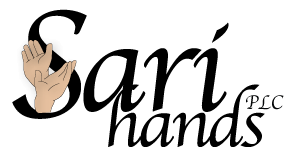Frequently Asked Questions
How does your therapy differ from other therapy practices?
Sari Lewis spends up to one full hour with clients at each visit, primarily providing hands-on techniques, including Craniosacral Therapy and other gentle manual therapies. She initially performs a complete postural evaluation and continues to work with you to realign your body, release restrictions, stretch your fascia and restore balance to the fluids surrounding your brain and spinal cord. Sari can also work with you to establish or update an exercise program, as well as looking at all areas of daily activities to improve efficiency. She believes that we all have internal wisdom to heal, and facilitates this healing and improved quality of life through her sessions with you.
What is Craniosacral Therapy?
Craniosacral Therapy is a gentle, non-invasive method of treatment that focuses on the rhythm of the cerebrospinal fluid produced in the brain, and flowing around the head and spinal cord. Restrictions that inhibit the flow of this fluid can cause clients to feel poorly. By monitoring and encouraging the flow of the cerebrospinal fluid, the body is encouraged to heal. See the definitions page for more information.
What do you feel should be the priority of objectives for your therapy clients?
I think that it's very important for each client to set their goals and intentions with the therapist. I have found that my goals might differ greatly from what a client wants to achieve. Pain management, stress reduction skills and client education regarding joint protection, energy conservation, work simplification and body mechanics are generally high priorities that I've seen with most clients.
I have been to a chiropractor in the past. How is your treatment different?
Both chiropractors and Craniosacral Therapists generally have the same goals in mind when working with clients. Craniosacral Therapists use gentle mobilization to the joints and tissues, whereas chiropractors generally perform manipulation to the spine. Mobilization is a slow, sustained movement to the fascia or joint performed to decrease pain and increase mobility of the joints, tissues and fluids. Mobilization is a more 'internal to external' treatment. Manipulation is typically a quick and forceful movement of a joint and is more 'external to internal'. Craniosacral Therapy tends to be more gentle and less jarring than chiropractic work, but the two may be used in a complementary fashion. I recommend that clients do not initiate several types of therapies simultaneously, but support continuing therapies that have been helpful in the past. I generally recommend receiving only one type of therapy in a day to avoid stressing the nervous system.
What can I expect during and after the treatments?
During most treatments, you will be lying on your back fully clothed. Comfortable clothing is recommended for the sessions, and pillows and blankets are provided for your comfort. (Some people like to bring socks if their feet tend to get cold) Sari may place her hands under your head, spine or other tissues to cradle them, and allow improved fluid flow and tissue release. You may also roll to your sides for some releases. You may move around during the sessions, as your tissues release. Some clients feel an urge to laugh or cry as a release. The most important thing is that you feel safe and well-supported in your healing process. After sessions, you will want to drink extra water to encourage release of toxins. Some clients report feeling very relaxed, and some report feeling very energized. These are your sessions, and stating your intentions can help achieve your goals in healing.
What kinds of problems can Craniosacral Therapy help?
Craniosacral Therapy has been successful for treating headaches, fibromyalgia, chronic fatigue, osteoarthritis, rheumatoid arthritis, back pain, and generalized chronic pain, as well as injuries from repetitive motion, and sports activities. Craniosacral Therapy is also calming to newborns and children and their caregivers.
How many treatment sessions will I need?
This will depend on the nature of your diagnosis and other factors, including the duration of your symptoms. A complete postural evaluation is performed at your first visit, along with your first treatment session. By the third visit, many clients will be able to determine whether the treatments are helping. Sari will re-evaluate your progress with you on a regular basis, and recommends 4-6 visits to determine the effectiveness of the therapy program.
Sari Lewis spends up to one full hour with clients at each visit, primarily providing hands-on techniques, including Craniosacral Therapy and other gentle manual therapies. She initially performs a complete postural evaluation and continues to work with you to realign your body, release restrictions, stretch your fascia and restore balance to the fluids surrounding your brain and spinal cord. Sari can also work with you to establish or update an exercise program, as well as looking at all areas of daily activities to improve efficiency. She believes that we all have internal wisdom to heal, and facilitates this healing and improved quality of life through her sessions with you.
What is Craniosacral Therapy?
Craniosacral Therapy is a gentle, non-invasive method of treatment that focuses on the rhythm of the cerebrospinal fluid produced in the brain, and flowing around the head and spinal cord. Restrictions that inhibit the flow of this fluid can cause clients to feel poorly. By monitoring and encouraging the flow of the cerebrospinal fluid, the body is encouraged to heal. See the definitions page for more information.
What do you feel should be the priority of objectives for your therapy clients?
I think that it's very important for each client to set their goals and intentions with the therapist. I have found that my goals might differ greatly from what a client wants to achieve. Pain management, stress reduction skills and client education regarding joint protection, energy conservation, work simplification and body mechanics are generally high priorities that I've seen with most clients.
I have been to a chiropractor in the past. How is your treatment different?
Both chiropractors and Craniosacral Therapists generally have the same goals in mind when working with clients. Craniosacral Therapists use gentle mobilization to the joints and tissues, whereas chiropractors generally perform manipulation to the spine. Mobilization is a slow, sustained movement to the fascia or joint performed to decrease pain and increase mobility of the joints, tissues and fluids. Mobilization is a more 'internal to external' treatment. Manipulation is typically a quick and forceful movement of a joint and is more 'external to internal'. Craniosacral Therapy tends to be more gentle and less jarring than chiropractic work, but the two may be used in a complementary fashion. I recommend that clients do not initiate several types of therapies simultaneously, but support continuing therapies that have been helpful in the past. I generally recommend receiving only one type of therapy in a day to avoid stressing the nervous system.
What can I expect during and after the treatments?
During most treatments, you will be lying on your back fully clothed. Comfortable clothing is recommended for the sessions, and pillows and blankets are provided for your comfort. (Some people like to bring socks if their feet tend to get cold) Sari may place her hands under your head, spine or other tissues to cradle them, and allow improved fluid flow and tissue release. You may also roll to your sides for some releases. You may move around during the sessions, as your tissues release. Some clients feel an urge to laugh or cry as a release. The most important thing is that you feel safe and well-supported in your healing process. After sessions, you will want to drink extra water to encourage release of toxins. Some clients report feeling very relaxed, and some report feeling very energized. These are your sessions, and stating your intentions can help achieve your goals in healing.
What kinds of problems can Craniosacral Therapy help?
Craniosacral Therapy has been successful for treating headaches, fibromyalgia, chronic fatigue, osteoarthritis, rheumatoid arthritis, back pain, and generalized chronic pain, as well as injuries from repetitive motion, and sports activities. Craniosacral Therapy is also calming to newborns and children and their caregivers.
How many treatment sessions will I need?
This will depend on the nature of your diagnosis and other factors, including the duration of your symptoms. A complete postural evaluation is performed at your first visit, along with your first treatment session. By the third visit, many clients will be able to determine whether the treatments are helping. Sari will re-evaluate your progress with you on a regular basis, and recommends 4-6 visits to determine the effectiveness of the therapy program.
© Sari Hands PLC
Sari Lewis • Phone 480–206-6592 • Email Sari
14362 N. Frank Lloyd Wright Blvd. • Suite 1000 • Scottsdale, AZ 85260
Sari Lewis • Phone 480–206-6592 • Email Sari
14362 N. Frank Lloyd Wright Blvd. • Suite 1000 • Scottsdale, AZ 85260
© web design by one eleven stockton, ca

